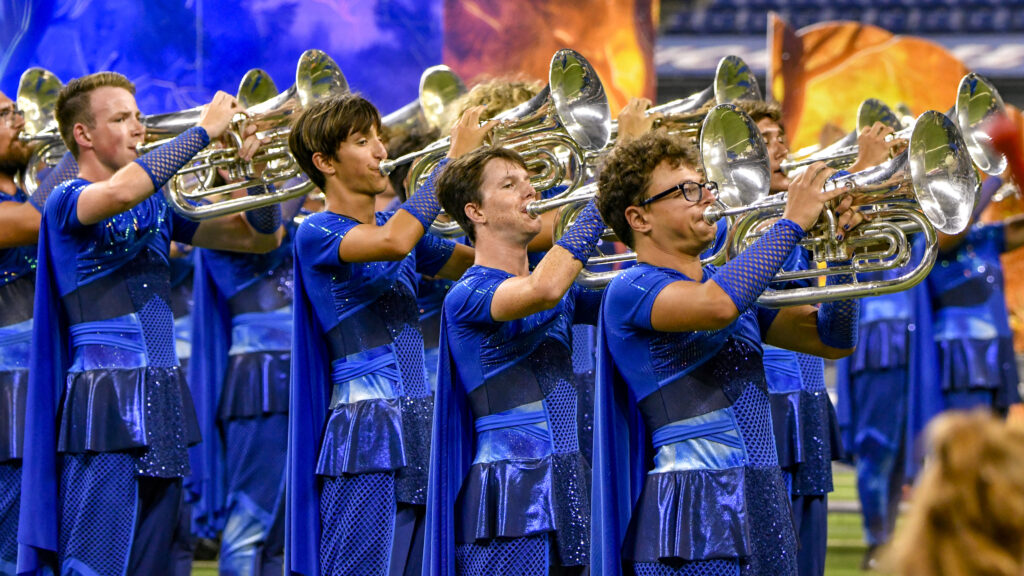From a Boston Crusaders’ press release:
The Boston Crusaders’ 2004 show will be entitled, “The Composition of Color.”
The Crusaders will take us on a complete journey, starting with a clear pallet of white, but through time, emotion, sight and sound, will take us on a full spectrum from primary color through the entire color wheel…ending in darkness. In true “Crusader style,” musical and visual cohesiveness, with a connection to the audience are paramount.
Look and listen for an even more pronounced Crusader identity as a majority of this production includes an original musical score – a first in Boston Crusader history. As audiences have experienced in past years, Boston’s program is an “effect-based” show, designed from the inside out, with all aspects of the production designed simultaneously, to keep the viewer engaged from all perspectives.
Movement one, “Introduction,” introduces the achromatic color scheme. Graduating from white to dark gray, as each element of the corps is introduced, the musical and visual presentation progresses to a huge ensemble climax.
Movement two, “Colored Rhythms,” is based around featuring three sections of performers, three colors and three rhythmic combinations. Look for primary colors to be the main thrust of this particular movement. This section of the show will contain a sequence, fugue and recapitulation. Watch and listen for the fugue to combine instrumentation groupings like never seen on the drum corps field.
Movement three is called “Colored Harmonies.” This lyrical movement of the show utilizes color interpretations that are transparent and monochromatic. It’s a “Boston Crusaders ballad,” with all the visual and musical splendor our audiences have grown accustomed. This movement of the show is heavily influenced and based upon “O Magnum Mysterium” by Morten Lauridsen.
Movement four is called “Colored Dynamics.” In this movement we introduce each color in a careful and strategic sequence. At the conclusion, we will have constructed the entire color wheel with full musical interpretation. Listen for an ostinato that is introduced by the percussion that becomes built upon and grows with intensity with the introduction of each color. In addition, each color will take on a different “personality” through narrative and visual portrayal.
This will all culminate to the huge jazz production (movement five), “Colored Combinations.”
Within this movement the Crusaders will start to bring the show to a close. This will incorporate motives and ostinatos that have been used throughout the production, taking the color wheel that was created in the last movement, and producing various color combinations and groupings in addition to musical suspensions and forms.
Movement six is entitled “Closing.” Throughout this final movement, the corps will transition into darkness, both musically and visually, leaving the audience with a complete lack of presence and color.





